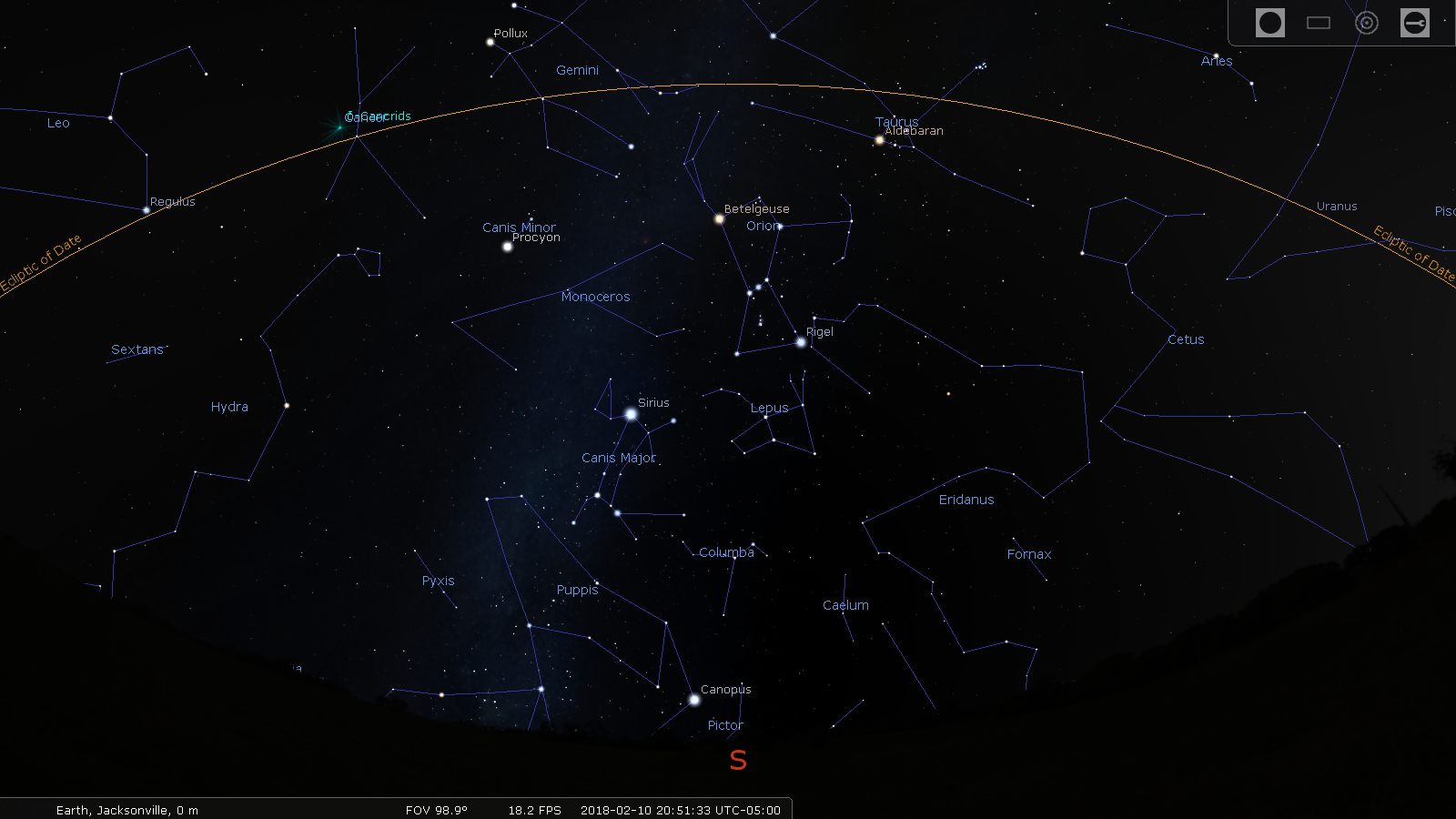THE USM SOUTHWORTH PLANETARIUM
207-780-4249 www.usm.maine.edu/planet
70 Falmouth Street Portland, Maine 04103
43.6667° N 70.2667° W
Altitude: 10 feet below sea level
Altitude: 10 feet below sea level
Founded January 1970
Julian date: 2458653.5
"Little things console us because little things afflict us." - Blaise Pascal
THE DAILY ASTRONOMER
Tuesday, June 19, 2019
Tuesday, June 19, 2019
On Not Seeing Orion
_______________________
Why 4 p.m.?
The DA will arrive at 4 p.m each weekday. At this latitude, 4 p.m. is just about the time of the earliest sunset of the year. So, by sending the DA at 4:00 p.m. each day, it will always arrive before sunset.
The DA will arrive at 4 p.m each weekday. At this latitude, 4 p.m. is just about the time of the earliest sunset of the year. So, by sending the DA at 4:00 p.m. each day, it will always arrive before sunset.
________________________
Why the Orion fixation?
Simple: it's the constellation we follow obsessively to truly keep track of the seasonal shifts. Calendars are lovely and reliable, but not particularly exciting. Date tracking in the night sky is far more scintillating. Choose a constellation and follow it throughout the year. Now, we would advise you to not choose any of the circumpolar constellations, for those always remain above the horizon. Pick a brilliant constellation, such as Orion, which is one of those precious few star patterns that are relatively easy to discern among the star-adorned firmament.
Venture outside early on a mid winter night and Orion the mighty hunter will loom high in the southern sky. Go out in the pre-dawn mid August sky and see Orion ascending above the horizon as the the sky brightens. Conversely, in mid May Orion is only visible briefly in the western early evening sky. Now, just as we're preparing for the solstice, Orion is not visible at all. In fact, we advise fellow Orion admirers not to bother seeking it out in June or July because it appears too close to the Sun.
What precisely does that statement mean?
Regard the graphic below:

The Sun will attain its maximum height along the ecliptic on Friday. At that time, the Sun will appear due north of Orion. For this reason, Orion is not currently visible as the Sun's brightness blocks it from our view.
The orange arc describes the "ecliptic," the Sun's apparent annual path through the sky. The Sun appears to travel along this arc because Earth revolves around the Sun, causing its position along the star field to shift by approximately one degree a day throughout the year. The Sun is almost at its apex (for us Northern Hemisphere denizens) of the year. As one can determine from the graphic (now above us), the Sun currently occupies a region of the sky around Orion. So, when Orion is in the sky, the Sun is, as well, and vice versa. In fact, if you go outside tomorrow around noon time, Orion will be due south in the sky! However, the Sun's light and the atmospheric light scattering will block it from your view.
As we proceed beyond the summer solstice, the Sun will slowly descend along the ecliptic and farther from Orion. By late July/early August, the Sun will be far enough away from Orion so that it will appear in the pre-dawn eastern sky. By mid August, the entire constellation will emerge before the brightening sky obscures it. At this time, the next Orion Cycle will begin anew.